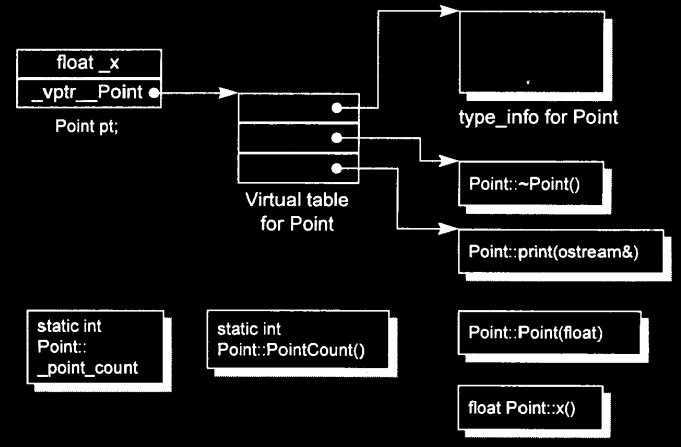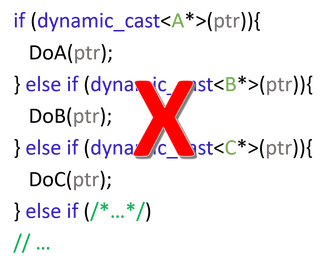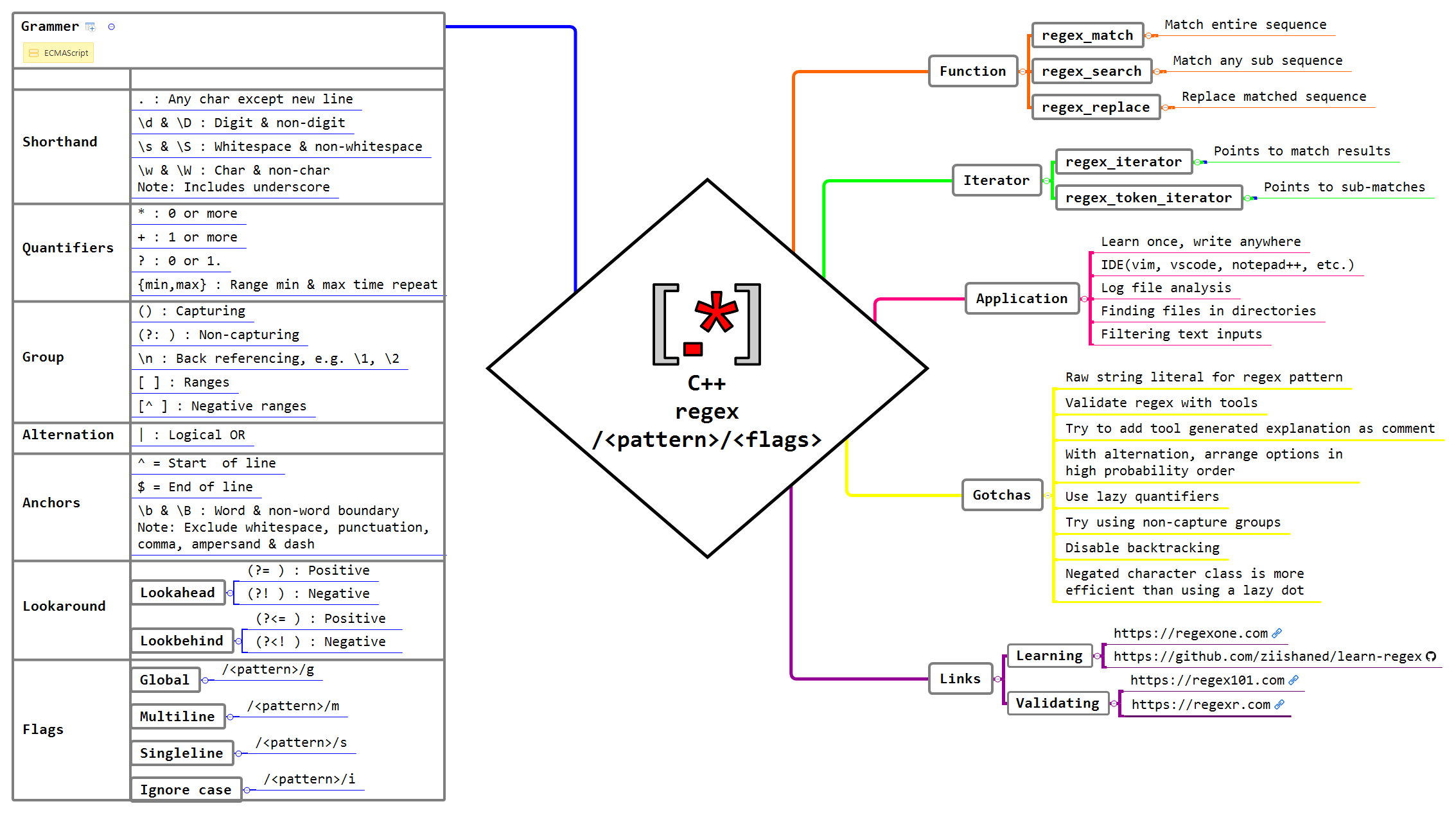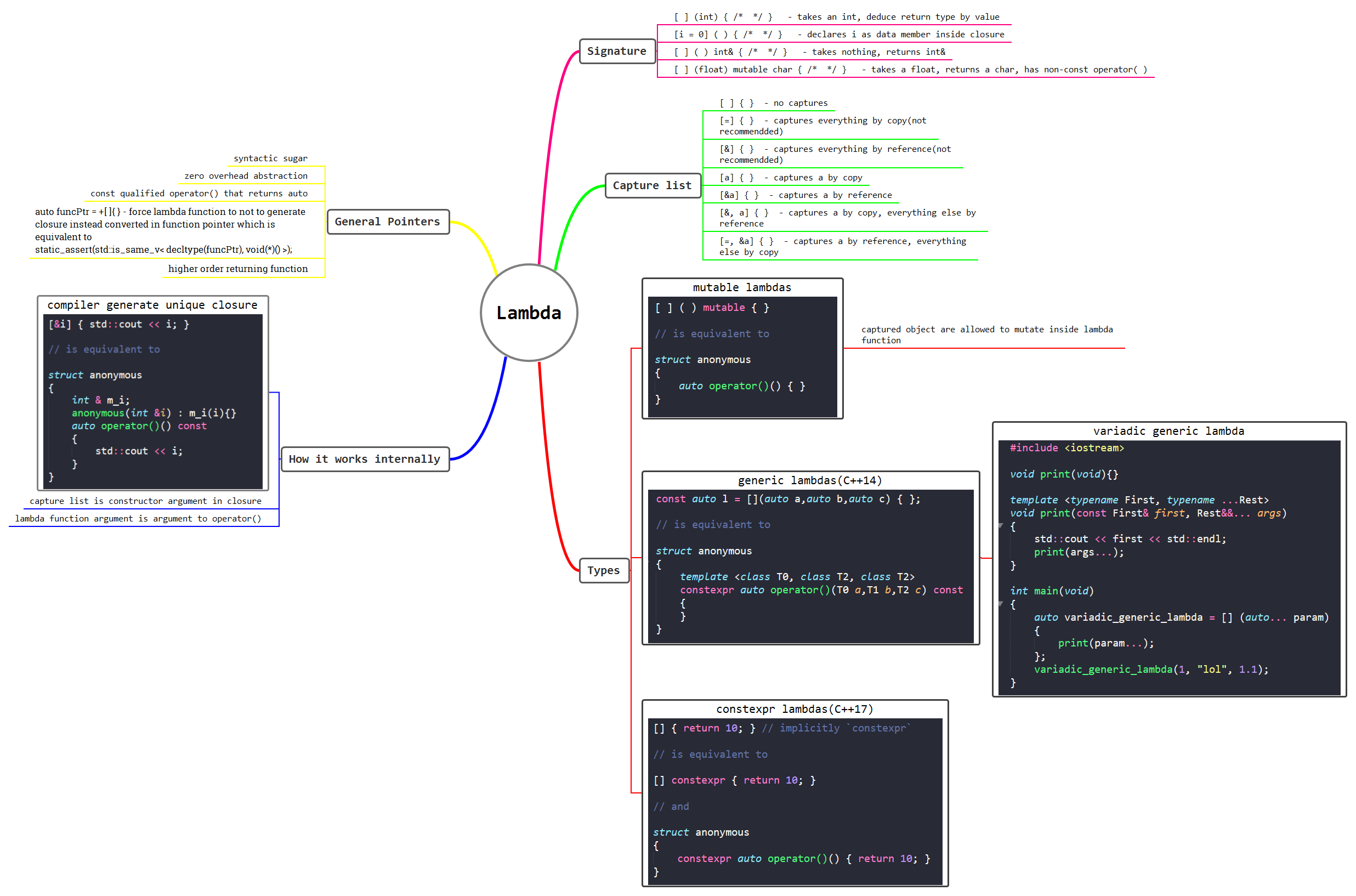In the previous article about How Does Virtual Base Class Works Internally? we have seen address resolution of virtual base class & why it’s needed. But I have not discussed Complications of Using the Virtual Base Class. Which we will see in this article. This is going to be a bit complex & clumsy then learning the internal working of the virtual base class. But if you are not tired, then read forward.
I am re-posting the previous example here to refresh some memory:
class Top { public: int t; };
class Left : virtual public Top { public: int l; };
class Right : virtual public Top { public: int r; };
class Bottom : public Left, public Right { public: int b; };
- Class diagram
Top / \ Left Right \ / Bottom
Contents
Complications of Downcasting While Using the Virtual Base Class
- As we have seen, casting of the object
BottomtoRight(in other words, upcasting) requires adding offset to a pointer. One might be tempted to think that downcasting can then simply be implemented by subtracting the same offset. - This process is not easy for the compiler as it seems. To understand this, let us go through an example.
class AnotherBottom : public Left, public Right
{
public:
int ab1;
int ab2;
};
Bottom&AnotherBottomhave the same inheritance hierarchy except for their own data members. Now consider the following code.
Bottom* bottom1 = new Bottom(); AnotherBottom* bottom2 = new AnotherBottom(); Top* top1 = bottom1; Top* top2 = bottom2; Left* left = static_cast<Left*>(top1);
- Following is memory layout for
Bottom&AnotherBottom
| | | |
|------------------------|<---- Bottom |------------------------|<---- AnotherBottom
| Left::l | | Left::l |
|------------------------| |------------------------|
| Left::_vptr_Left | | Left::_vptr_Left |
|------------------------| |------------------------|
| Right::r | | Right::r |
|------------------------| |------------------------|
| Right::_vptr_Right | | Right::_vptr_Right |
|------------------------| |------------------------|
| Bottom::b | | AnotherBottom::ab1 |
top1-->|------------------------| |------------------------|
| Top::t | | AnotherBottom::ab2 |
|------------------------| top2----->|------------------------|
| | | Top::t |
|------------------------|
| |
- Now consider how to implement the
static_castfromtop1toleft, while taking into account that we do not know whethertop1is pointing to an object of typeBottomor an object of typeAnotherBottom. It can’t be done! The necessary offset depends on the runtime type oftop1(20 forBottomand 24 forAnotherBottom). The compiler will complain:
error: cannot convert from a pointer to base class 'Top' to a pointer to derived class 'Left' because the base is virtual
- Since we need runtime information, we need to use a dynamic_cast instead:
Left* left = dynamic_cast<Left*>(top1);
- However, the compiler is still unhappy:
error: cannot dynamic_cast 'top1' (of type 'class Top*')to type 'class Left*' (source type is not polymorphic)
- The problem is that a dynamic_cast (as well as the use of
typeid) needs runtime type information about the object pointed to bytop1. The compiler did not include that because it did not think that was necessary. To force the compiler to include that, we can add a virtual destructor toTop:
class Top
{
public:
virtual ~Top() {} // This line creates magic for us
int t;
};
- Thus, for a downcasting object having virtual base class we need to have at least one virtual function in the virtual base class.
Double Pointer Hack
- For below code:
Bottom* b = new Bottom(); Right* r = b;
- We already know that the value of
bgets adjusted by 8 bytes before it is assigned torso that it points to theRightsection of theBottomobject). Thus, we can legally assign aBottom*to aRight*. What aboutBottom**andRight**?
Bottom** bb = &b; Right** rr = bb;
- Should the compiler accept this? A quick test will show that the compiler will complain:
error: invalid conversion from `Bottom**' to `Right**'
- Why? Suppose the compiler would accept the assignment of
bbtorr. We can visualise the result as:
|----------| --------> |---------| | |
| bb | | b | ------> |------------------------|<---- Bottom
|----------| /----> |---------| | Left::l |
/ |------------------------|
/ | Left::_vptr_Left |
|----------| / |---------| ------> |------------------------|
| rr | | r | | Right::r |
|----------| |---------| |------------------------|
| Right::_vptr_Right |
|------------------------|
| Bottom::b |
|------------------------|
| Top::t |
|------------------------|
| |
- So,
bbandrrboth point tob, andbandrpoint to the appropriate sections of theBottomobject. Now consider what happens when we assign to*rr(note that the type of*rrisRight*, so this assignment is valid):
*rr = b;
- This is essentially the same assignment as the assignment to
rabove. Thus, the compiler will implement it the same way! In particular, it will adjust the value ofbby 8 bytes before it assigns it to*rr. But*rrpointed tob! If we visualise the result again:
|----------| --------> |-----------| | |
| bb | | b | |------------------------|<---- Bottom
|----------| /----> |-----------|\ | Left::l |
/ \ |------------------------|
/ \ | Left::_vptr_Left |
|----------| / |-----------|---\-----> |------------------------|
| rr | | r | | Right::r |
|----------| |-----------| |------------------------|
| Right::_vptr_Right |
|------------------------|
| Bottom::b |
|------------------------|
| Top::t |
|------------------------|
| |
- This is correct as long as we access the
Bottomobject through*rr, but as soon as we access it throughbitself, all memory references will be off by 8 bytes — obviously a very undesirable situation. - So, in summary, even if
*aand*bare related by some subtyping relation,**aand**bare not.
Constructors of Virtual Bases
- The compiler must guarantees that the constructor for all virtual bases of a class gets invoked, and get invoked only once. If you don’t explicitly call the constructors of your virtual base class (independent of how far up the tree they are), the compiler will automatically insert a call to their default constructors.
- This can lead to some unexpected results. Consider the same class hierarchy again we have been considering so far, extended with constructors:
class Top
{
public:
Top() { a = -1; }
Top(int _a) { a = _a; }
int a;
};
class Left : virtual public Top
{
public:
Left() { b = -2; }
Left(int _a, int _b) : Top(_a) { b = _b; }
int b;
};
class Right : virtual public Top
{
public:
Right() { c = -3; }
Right(int _a, int _c) : Top(_a) { c = _c; }
int c;
};
class Bottom : public Left, public Right
{
public:
Bottom() { d = -4; }
Bottom(int _a, int _b, int _c, int _d) : Left(_a, _b), Right(_a, _c)
{
d = _d;
}
int d;
};
- What would you expect this to output:
Bottom bottom(1,2,3,4);
printf("%d %d %d %d %d\n", bottom.Left::a, bottom.Right::a, bottom.b, bottom.c, bottom.d);
- You would probably get
-1 -1 2 3 4
- I know you were expecting different. But if you trace the execution of the constructors, you will find
Top::Top() Left::Left(1,2) Right::Right(1,3) Bottom::Bottom(1,2,3,4)
- As explained above, the compiler has inserted a call to the default constructor in
Bottom, before the execution of the other constructors. Then when Left tries to call its base class constructor(Top), we find thatTophas already been initialised and the constructor does not get invoked. - To avoid this situation, you should explicitly call the constructor of your virtual base(s):
Bottom(int _a, int _b, int _c, int _d): Top(_a), Left(_a,_b), Right(_a,_c)
{
d = _d;
}
Pointer Equivalence
- Once again assuming the same (virtual) class hierarchy, would you expect this to print “Equal”?
Bottom* b = new Bottom();
Right* r = b;
if(r == b)
printf("Equal!\n");
- Bear in mind that the two addresses are not actually equal (
ris off by 8 bytes). However, that should be completely transparent to the user; so, the compiler actually subtracts the 8 bytes fromrbefore comparing it tob; thus, the two addresses are considered equal. - Although, this also stands true for the following code.
class base1{};
class base2{};
class derived : public base1, public base2{};
derived *d = new derived();
base2 *b2 = d;
if(b2 == d)
printf("Equal!\n");
Reference
- http://www.avabodh.com/cxxin/virtualbase.html
- https://stackoverflow.com/questions/21558/in-c-what-is-a-virtual-base-class
- https://web.archive.org/web/20160413064252/http://www.phpcompiler.org/articles/virtualinheritance.html
- Book: Inside C++ Object Model By Lippman
Do you like it☝️? Get such articles directly into the inbox…!?



